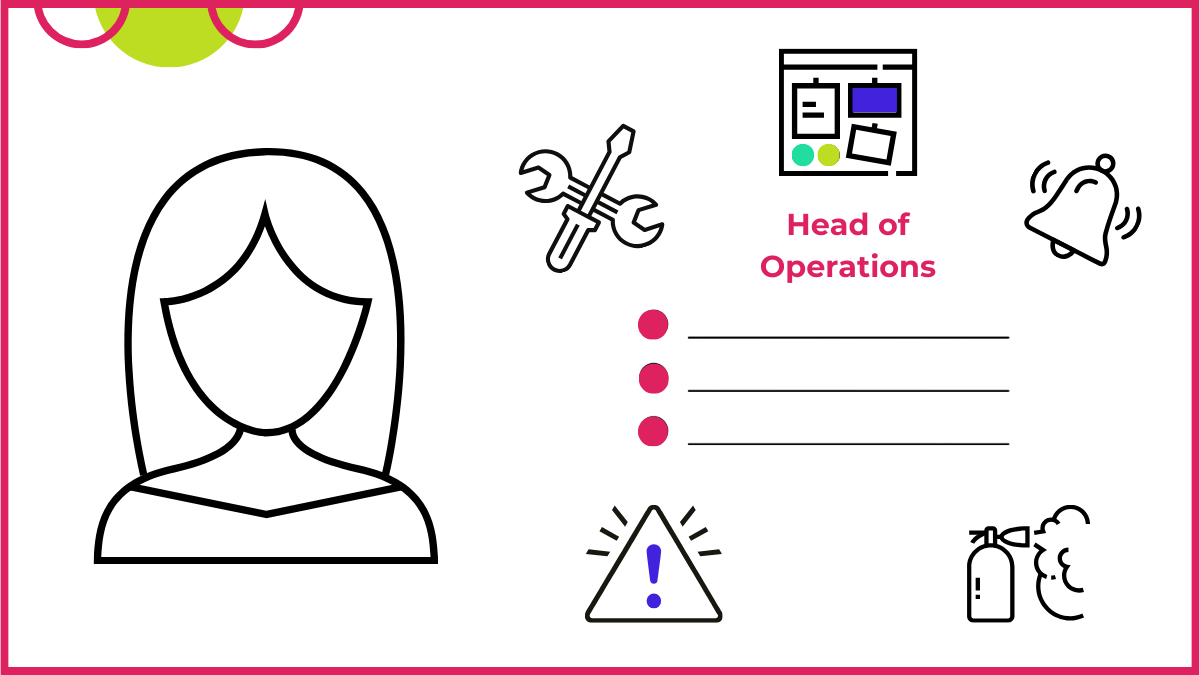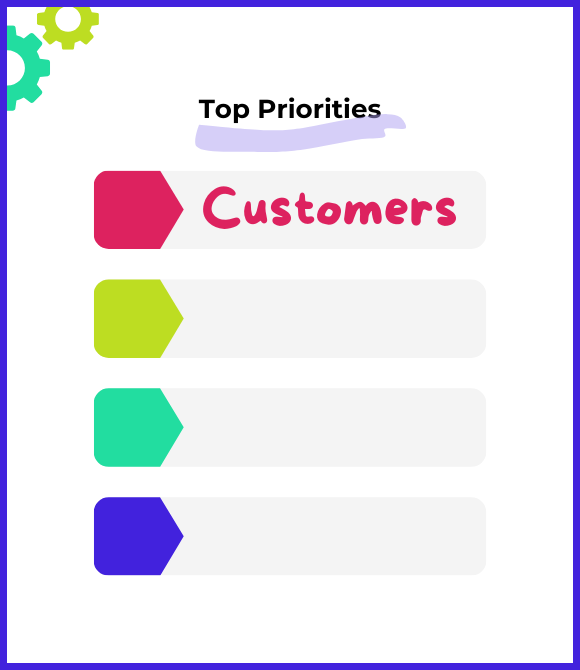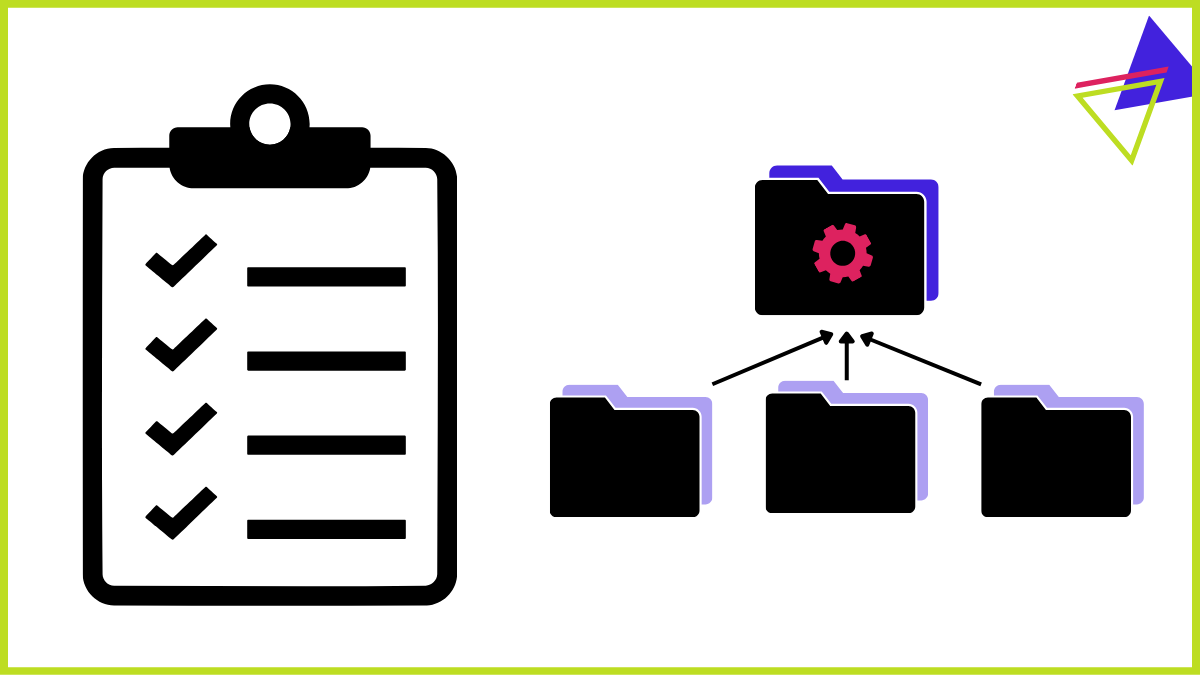Best practices to lead operations with confidence and impact
I’ll let you in on a little secret. Whether you’re a senior Ops leader or just getting started in Operations, chances are you won’t find one clear, standardised definition of what your job is supposed to be. That’s because it doesn’t exist. How is this even possible? You might be wondering. Well, it’s because Operations roles are inherently diverse. They vary (sometimes quite dramatically) depending on the industry you’re in, the size and maturity of your company, the organisational structure, and how leadership views the Ops function.
This lack of a standardised definition often creates a lot of ambiguity. I’ve seen Ops professionals unsure of their responsibilities, frequently ending up as full-time firefighters, reacting to problems, jumping between emergencies, and living in constant fix-it mode. I’ve also seen (far too many) companies that willingly treat Ops as a catch-all department for whatever’s broken, assuming it's just there to deal with chaos. And that’s a shame, because it’s exhausting, unsustainable, and most importantly, it completely undervalues the true potential of the amazing people working in Ops.
But it doesn’t have to be that way. Best-in-class Ops leaders don’t just react: they SHAPE. They influence company direction, drive growth and profitability, lead teams, build efficient systems and processes, and act as the connective tissue between silos. How? They use that same ambiguity most people find frustrating and turn it into an advantage. They step up, define their role themselves, and show the business what Operations can be: a strategic, impactful, and versatile force that strengthens the company and continuously creates value.
So, you’ve got a choice to make: what type of Ops professional do you want to be? As you probably guessed, I’ll always encourage you to be the one who leads and shapes, because that’s where the real impact (and real career growth) happens. And to help you do just that, I’m going to walk you through best practices for ambitious Ops leaders, who don’t wait for clarity, but create it, and constantly prove what great things they can do for the business.
Happy learning!
Define your role early on
Naturally, this would always be my first piece of advice. Operations can mean a hundred different things depending on the company, the team, or even the week. Yes, a big part of Ops is being the (default) fixer, but that cannot be all you’re doing. Take the time to understand the business needs and strategy early on, then shape your role around them. Be proactive. Go to your CEO, Ops Director, or line manager and say, “Here’s how I plan to contribute.” This will help position you as a strategic contributor, someone helping to shape the future of the company. And that’s exactly who you should aspire to be.
And if you’re in a junior Ops role? It’s never too early to be ambitious. You don’t have to wait for permission to go beyond cleaning up the mess. Don’t be afraid to speak up, ask for more, and show the kind of Ops professional you want to become.
Quick win: Focus on the next quarter. Pick your top three priorities and share them with leadership, so they know what you’ll be working to achieve.
Prioritise your customers
Ops roles exist to serve the business and its people. But when the to-do list never ends and everything feels urgent, it’s easy to forget that at the core, we’re here to make things better for people. That’s the job, and you need to keep reminding yourself that customers are your priority. Sometimes that means the people paying for your product. Other times, it’s the internal teams who rely on your help every single day to do their jobs.
Your focus should be on solving problems that matter, saving people time, and making things simpler, faster, and more useful for the people you support. When you do that, you build trust, earn influence, and strengthen your position as a strategic partner (remember - strategic, not just a behind-the-scenes support function, is the goal!).
And perhaps most importantly, customer-first Ops is essential for scaling and sustainable growth in any modern business. You’ll still come across Ops professionals—and, unfortunately, entire companies—operating with a “what works for Ops” mindset. But the truth is, there’s no real place for that approach anymore. In today’s environment, you either prioritise your customers and help push the business forward, or prioritise “operations” and end up holding it back.
Quick win: Ask one team this week: “What’s the one thing we (Ops) could do to make your work easier?” and act on it.
Keep collecting feedback
Collecting feedback is one of the best habits you can develop as an Ops professional. We’re exposed to nearly every corner of the business. We see what’s broken, what could be improved, and we usually have plenty of our own ideas. But relying only on our own ideas isn’t always the best path forward. Like I said earlier, one of our most important jobs is to serve our customers, and that means continuously learning about their real pain points. And you can’t do that just by observing. You need to talk to the people who actually use your products, policies, tools, processes, and systems.
There are many tools that let you collect feedback quickly, efficiently, and consistently: surveys, questionnaires, polls, and so on. But you don’t have to go all formal. Sometimes a quick chat or a Slack message can be just as useful. It might reveal something you hadn’t considered and help you make smarter, more valuable decisions for your customers, your team and the business.
Quick win: Create one feedback channel for internal improvements this month and test it with your team to see how it works in practice.
Standardise where it makes sense
I’m really not exaggerating when I say you’ll find inconsistencies in just about any business. Internal requests come in through emails, Slack, request forms, or my personal favourite: someone casually dropping it on you as they walk by your desk. Teams using the same tool in completely different ways. Different reporting structures. Skipped steps in processes. Documents stored… well, who knows where! It gets messy and chaotic, and drives a lot of people a little mad.
No doubt, standardising is one of the most important tasks you’ll take on as an Ops professional. Your business needs clear, repeatable ways of doing things to be efficient. So where should you look? Think about the situations where your team gets confused, where they’re constantly chasing information, or where things slow down, like approvals that drag on, or processes so clunky people try to bypass them altogether. Check if you have templates and checklists for recurring tasks. Check if your naming conventions and reporting formats are consistent. These are all great clues. And here’s one (very good) tip: standardise where it actually helps. Don’t obsess over streamlining everything, otherwise, you’ll create more friction than flow.
Quick win: Choose one recurring process (like employee or client onboarding) and standardise it with a checklist.
Document relentlessly
Documenting should be quite literally embedded in the DNA of an Ops professional. Why? Because no business can thrive when critical information lives in someone’s head or gets buried in random Slack threads. It’s just too risky. What happens if that person goes on leave, gets sick, or moves on? Work slows down. Decisions stall. And suddenly, the team is stuck waiting for answers that should’ve been written down in the first place. If that’s not enough to convince you, remember this: lack of documentation creates confusion and makes it way too easy for people to avoid accountability. I’ve lost count of how many times I’ve heard, “I didn’t know. It wasn’t documented.” That’s not exactly helpful when you’re trying to grow a business. Finally, the more senior the role, the more knowledge tends to accumulate with that person. But does your CEO, Ops Director, or [fill in the blank ] really want to be a walking Wikipedia, answering the same questions over and over again? I know I don’t. It’s far more efficient (and scalable!) to write things down once and let people access the information when they need it.
There’s a lot to document in any business: frameworks, policies, processes, guidelines, client information, projects. Keep it simple, keep it updated, and keep it accessible. Get your team on board and build a habit of relentless documentation, so knowledge is shared and not hidden away by individuals. The good news? With AI and all the tools available today, documenting has never been easier.
Quick win: Identify two key processes or workflows that haven’t been documented yet, write them down, and share them in your dedicated documentation hub.
Take care of the tools that run the business
Most people in a company don’t pay much attention to the tools they use, at least not until something breaks, slows them down, or they can’t get what they need. But not you. You’re in Ops, and you know that tools and technology are the backbone of execution, efficiency, and visibility. The right toolset can save your team hours of work, reduce frustration, build trust in your data and help everyone collaborate and make better decisions.
You should take the time to research and carefully choose your tools, implement them properly, and regularly evaluate what your business is already using, so you can improve, replace, or retire them when needed. A big part of taking care of your tools should be exploring automation and integration, especially if you’re trying to scale. Keep looking for manual work that can be reduced and repetitive tasks that can be automated. Think of it as an ongoing mission to free up people’s time so that they can focus on higher-impact work.
Quick win: Create a list of all the systems and tools your business uses, so you can quickly spot which ones are no longer useful and cancel them.
Control risks
Things go wrong in business all the time. Processes break, handovers get missed, approvals slip through, or inaccurate data ends up in front of a client. How often do we actually stop to ask, “Could we have prevented this?” Probably not as often as we should. And sometimes we choose to ignore what’s happened. Maybe because we’re tired, frustrated, or it just seems too small to worry about. But that’s exactly why we need to keep reminding ourselves that even small risks can turn into big problems. And when they do? Well, you know what comes next, our favourite thing: firefighting.
Ops professionals truly are in a unique position to get ahead of all that. You’re close to the systems, processes, and people doing the actual work, which means you’re perfectly placed to lead the company-wide effort on controlling risks. Your team should absolutely be involved in spotting and reducing them, but you should take ownership of building a culture where risk awareness and mitigation are part of how the business operates every day.
Quick win: Create a simple Risk Register and hold a 30-minute risk review each month.
Be data-driven
I think I’ve made it abundantly clear by now that in Ops, you’ll be dealing with ambiguity, complexity, and competing priorities a lot. To avoid confusion, second-guessing, and decision fatigue, make data your best friend!
Data brings clarity. It helps you make smarter decisions, spot what’s worth solving, and figure out where your work will have the biggest impact. It also gives you credibility. Remember that people listen to data. It’s much easier to get buy-in for your ideas and projects when they’re backed by numbers, not just gut feeling. And finally, a lot of Ops work happens behind the scenes. Using data to show outcomes, like faster onboarding, fewer support tickets, or smoother processes, helps you talk about your successes and the impact you’re making in a way that’s hard to ignore. So, learn early on what data your company is collecting, and which parts of it will actually help you in your day-to-day work.
Quick win: Identify two key metrics that reflect your Ops impact and start tracking them.
Next steps
Share this article with your team: Help your team (and your leadership) understand what great Ops looks like.
Download the full guide: Curious if there’s more? Grab the complete guide with our best practices, bonus insights, and a one-page summary you can share with your team. Get the full guide here. (Coming soon)
Subscribe to Opsi Monthly: Want more actionable insights, tools, and tips like the ones in this article? Join Opsi Monthly, our newsletter for busy, ambitious Ops leaders.
Join the conversation: Did we miss one? Drop your go-to best practice in the comments. We’d love to learn what’s worked for you!








